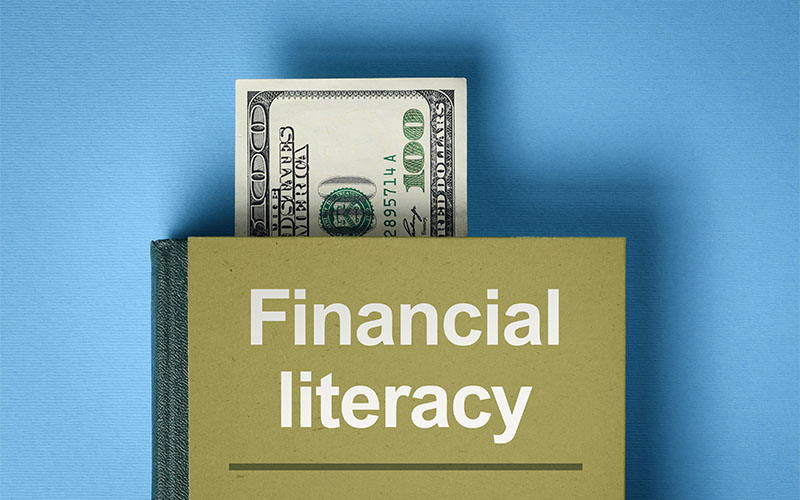Financial literacy is not just a skill—it is a fundamental life competency. Yet, for too long, it has been treated as an optional subject, something to be learned haphazardly through trial and error in adulthood. This approach has led to global statistics highlighting widespread financial illiteracy, high levels of consumer debt, and a crippling lack of retirement savings, especially among younger generations. The solution is clear and compelling: financial education must start early.
The early years of a person’s life are the most formative for developing habits, mindsets, and core competencies. Just as we teach children to read, write, and practice good hygiene, we must equip them with the knowledge to navigate the financial world. Introducing financial concepts from a young age is not about turning children into Wall Street prodigies; it’s about building a robust foundation for responsible decision-making and long-term well-being.
The Pervasive Cost of Financial Illiteracy
The consequences of delaying financial education are stark and measurable. Numerous surveys and studies reveal a troubling landscape:
- Low Confidence: A significant majority of teenagers and young adults express a lack of confidence in their personal finance knowledge. They often feel unprepared to handle real-world financial challenges.
- Mounting Debt: High credit card debt and student loan burdens are common among young adults, leading to significant stress and delayed life milestones like homeownership or starting a family.
- Vulnerability to Scams: Financially illiterate individuals are more susceptible to fraud and financial exploitation, losing hard-earned money to deceptive schemes.
- Delayed Savings: Many young people fail to grasp the power of compounding interest, delaying critical actions like saving for retirement or building an emergency fund, which dramatically reduces their potential future wealth.
These statistics underscore a global failure to prioritize a skill essential for modern life. By starting early, we move from remediation—fixing bad financial decisions—to prevention, fostering a generation of financially resilient individuals.
The Foundation: Age-Appropriate Learning
Financial education doesn’t need to be intimidating. It can be seamlessly integrated into a child’s life using age-appropriate methods:
Ages 3-7: Laying the Groundwork
At this stage, the focus is on tangible concepts:
- The Value of Money: Using physical coins and bills to buy small items teaches them that money is limited and exchanged for goods.
- Earning: Introducing the idea that money is earned through work, whether it’s a small chore allowance or seeing a parent go to a job.
- Saving Jars: The classic ‘Spend, Save, Give’ jar system visually represents goal-setting and delayed gratification.
Ages 8-12: Practical Concepts
As abstract thought develops, lessons become more practical:
- Needs vs. Wants: Engaging children in family budgeting discussions to differentiate between necessities (needs) and luxuries (wants).
- Comparison Shopping: Involving them in grocery trips to compare prices and understand value, introducing concepts like unit cost.
- Goal Setting: Moving from short-term goals (a new toy) to medium-term goals (saving for a vacation or a larger purchase), reinforcing the discipline of saving over time.
Ages 13-18: Real-World Readiness
This is a pivotal time for introducing complex adult financial tools:
- Budgeting and Tracking: Using apps or spreadsheets to track their allowance or part-time job earnings and expenditures, preparing them for independent living.
- The Mechanics of Credit and Debt: Explaining how credit cards, interest rates, and credit scores work. Crucially, demystifying ‘good debt’ (like a mortgage) versus ‘bad debt’ (high-interest consumer debt).
- Introduction to Investing: Teaching the fundamentals of compounding and risk diversification. Showing them that even small, consistent investments can yield substantial results over decades.
Beyond the Numbers: Developing a Financial Mindset
Early financial education offers benefits that extend far beyond simply balancing a checkbook. It fosters essential life skills and a healthy mindset:
- Delayed Gratification: The ability to postpone immediate pleasure for greater future reward is a cornerstone of financial success. Learning to save for a desired item, rather than impulsively buying, trains the brain for long-term planning.
- Confidence and Independence: Understanding money gives young people a sense of control and empowerment. They are more likely to make major life decisions (like choosing a college or taking a loan) with confidence and clarity, reducing reliance on others.
- Reduced Stress: Financial stress is a leading cause of anxiety and poor health in adults. Equipping children with the skills to manage their money effectively significantly reduces the probability of severe financial stress later in life.
- Entrepreneurial Spirit: Understanding concepts like cash flow, profit margins, and investment risk can nurture an entrepreneurial mindset, encouraging creativity and sensible risk-taking.
A Call to Action for Parents and Educators
The responsibility for this change falls on two key pillars: the home and the school system.
In the Home: Leading by Example
Parents are the most trusted source of financial guidance for young people. Open, transparent conversations about money are crucial. This doesn’t mean sharing every financial struggle, but rather modeling responsible behavior. Talk about your budget, explain your choices, and involve your children in appropriate financial decisions. Turn everyday activities—shopping, paying bills, discussing insurance—into teachable moments.
In the Classroom: Mandatory and Comprehensive
While some states and countries have begun to implement mandatory personal finance courses, this must become a global standard. Financial literacy should be a core component of the curriculum, taught with the same rigor as mathematics or history. Critically, these courses must be practical and engaging, using real-world case studies and interactive tools, not just abstract theory.
Conclusion: The Ultimate Investment
Starting financial education early is the ultimate form of long-term investment. It’s an investment not just in a child’s future wealth, but in their freedom, stability, and overall happiness. By transforming financial literacy from a luxury subject into an early-life necessity, we empower the next generation to break cycles of debt, build significant personal wealth, and become confident, capable contributors to a more economically stable society. The cost of inertia is far greater than the effort required to make this vital change. Let us commit to giving our young people the financial wings they need to fly.




